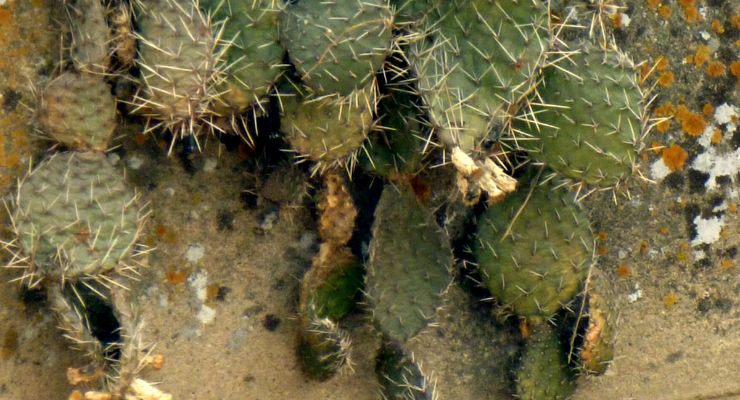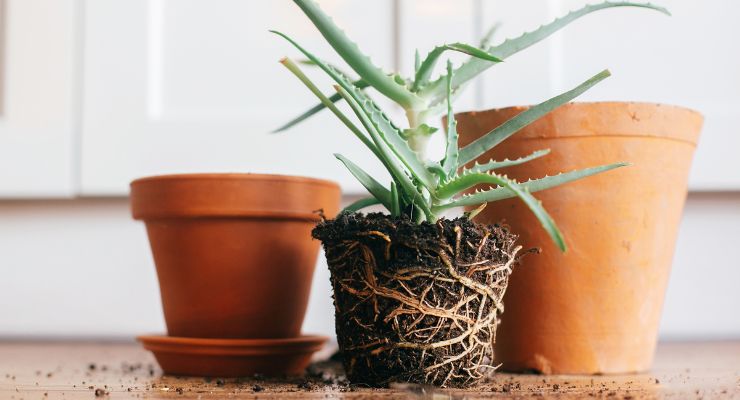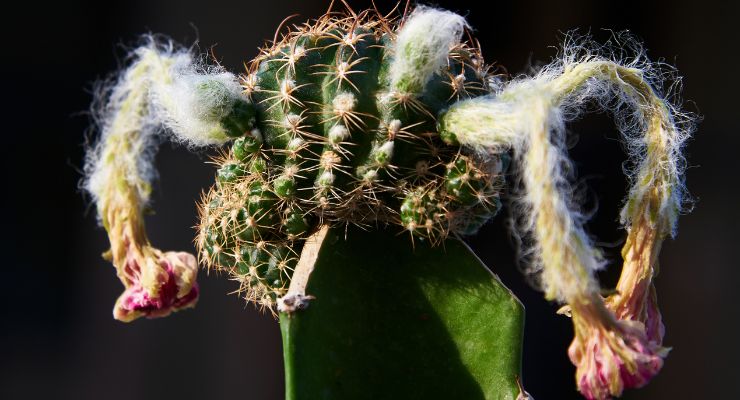Cactus drooping is a common problem that many cactus owners encounter. It refers to the condition where the stems or leaves of a cactus plant appear limp, bend down, or droop toward the ground.
This phenomenon can indicate an underlying issue in the plant’s health. It can be concerning for cactus enthusiasts who want to maintain healthy and vibrant cacti in their gardens or indoor spaces.
Cactus plants are known for their ability to survive in harsh and arid environments, but they are not immune to issues such as overwatering, underwatering, pests, diseases, or physical damage. Identifying the causes and symptoms is crucial in maintaining the health and vitality of these fascinating plants.
In this article, we will explore the various causes and symptoms of cactus drooping, as well as the steps that can be taken to prevent and treat this condition.
Diagnosis and Treatment of Cactus Drooping
This is an indication of plant stress, which can be caused by several factors such as inadequate sunlight or water, mealybugs, types of freeze damage, weak roots, and is potted in a container that is too large for the plant.
Identification of Symptoms
Identification of symptoms is the first step in diagnosing drooping or sagging branches:
Wilting or drooping stems and leaves: This is the most common symptom, the stems and leaves may bend toward the ground or appear limp and soft.
Yellowing or browning of foliage: If the leaves or stems turn yellow or brown, it may be a sign of an underlying issue with the cactus.
Soft or mushy spots on the cactus plant: These squishy spots may indicate rot, which can be caused by overwatering or poor soil drainage.
Stunted growth: If the cactus branches are not growing or appear to be shrinking, it may be a sign of an underlying issue.
Discoloration or spots on the cactus: Discoloration or white spots on the cactus plant can be a sign of pests or diseases.
By identifying these symptoms, cactus owners can determine the potential cause of the drooping and take appropriate measures to treat the issue.

Examination of the Soil and Roots
There are multiple reasons why a cactus plant may droop, and soil and root issues are among them. To examine the soil and roots of a drooping cactus, gently remove it from the pot and inspect the roots for signs of health, such as white or black and mushy roots indicating root rot.
Too few or too many roots can also be problematic, and an ideal container for a cactus should have only a little extra space. Cactus plants prefer fast-draining and airy soil, and overwatering or waterlogged soil can cause drooping. It is recommended to allow the soil to completely dry out before watering.
The accumulation of minerals from tap water can also damage the plant, so repotting every one to two years is advised, especially if tap water is used for watering. Weak roots and being potted in a large container can also contribute to drooping or falling over.
Watering Management
To manage watering for a drooping cactus, it is important to understand the plant’s specific needs. Overwatering is a common cause of drooping in cacti, as they are adapted to arid environments and are capable of storing water for long periods. It is important to allow the soil to dry out completely before watering again.
To determine if the cactus needs water, stick a wooden skewer or finger into the soil. If the soil feels dry, it is time to water your cactus. However, if the soil is still moist, it is best to wait a few more days before watering.
When watering a cactus, it is important to avoid getting water on the leaves or stems as this can lead to rot. Watering at the base of the plant is best. A watering can with a long spout or a hose with a gentle spray be used to ensure that water reaches the base of the plant without getting on the leaves or stem.
During periods of cooler weather or dormancy, cacti require less water than during active growth periods. It is essential to adjust the watering frequency accordingly. By properly managing to water, drooping branches and a whole cactus can often recover and regain its healthy shape.

Pesticide and Fungicide Treatment
If the cause of a drooping cactus is determined to be pests or fungal issues, then pesticide and fungicide treatments may be necessary. Before applying any treatment, it’s important to identify the specific pest or fungus affecting the cactus to ensure that the appropriate treatment is used.
For common pests such as mealybugs or spider mites, insecticidal soap or neem oil can be effective in controlling their population. Fungal issues can be treated by removing any affected roots and replanting the cactus in fresh soil. The application of a fungicide such as copper sulfate or sulfur powder may also be helpful.
It’s important to follow the instructions on the pesticide or fungicide carefully and to apply it only as needed, as overuse can lead to further damage to the cactus. Additionally, it’s important to monitor the cactus closely after treatment to ensure that the issue has been resolved and to take any necessary follow-up measures.
Repotting
When repotting a cactus, improper handling can cause drooping, wilting, or even death due to stress. Excess soil moisture from a too-large pot or being root-bound in a too-small pot can lead to drooping.
To prevent this, choose an appropriate size pot and fast-draining soil. Gently handle the cactus, and water sparingly, and allow gradual adjustment. Additional support may be necessary for a full recovery.

Pruning and Propagation
Pruning and propagation can cause cactus drooping if not done properly. When pruning, it is important to use clean and sharp tools to prevent damaging the plant. Cactus stems are prone to rot, and any damage can lead to infection and ultimately drooping. It’s also important to wait a few days after pruning before watering the cactus to allow the wound to heal.
Propagation can cause drooping if the newly propagated plant is not given enough time to establish roots before being moved to its permanent location. During the propagation process, the cactus is vulnerable to shock and stress, and moving it too soon can cause drooping or even death.
It’s important to follow the proper steps for propagation, which may include allowing the cuttings to callus over for a few days before planting them in well-draining soil and avoiding direct sunlight until the plant has established roots.
Prevention of Cactus Drooping
To prevent this problem, there are several factors to consider. First, make sure your cactus is placed in a well-lit area with bright, indirect sunlight and temperatures between 60°F (15°C) and 80°F (27°C). Cacti prefer a dry environment, so maintain proper air circulation and avoid over-watering.
Choosing the appropriate soil mix is also crucial. A well-draining soil mix consisting of 50% to 70% mineral material and 30% to 50% organic material will prevent waterlogging and develop root rot.
Be careful when repotting to minimize transplant shock. Gradually acclimate your cactus to its new environment over several days, and provide additional support if needed until it fully recovers.
Conclusion
Cactus drooping can be caused by various factors, including soil and root issues, inadequate watering, pests and diseases, environmental factors, and improper pruning and propagation techniques.
To diagnose and treat sagging branches, it is essential to identify the symptoms, examine the soil and roots, manage water, use appropriate soil mix, control pests and diseases, maintain a suitable environment, and use proper pruning and propagation techniques.
Proper care is essential to prevent cactus drooping and ensure the healthy growth of your cacti. Cactus plants are hardy plants, but they still require adequate watering, well-draining soil, and protection from pests and diseases. Failure to care for your cacti properly can result in stunted growth, wilting, and even death.
By providing the right care, you can enjoy the beautiful flourishing growth of your cactus plants for many years to come.

